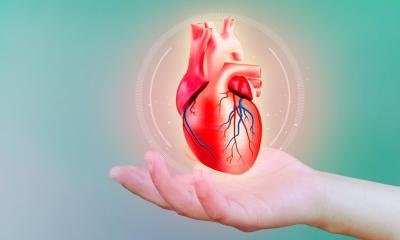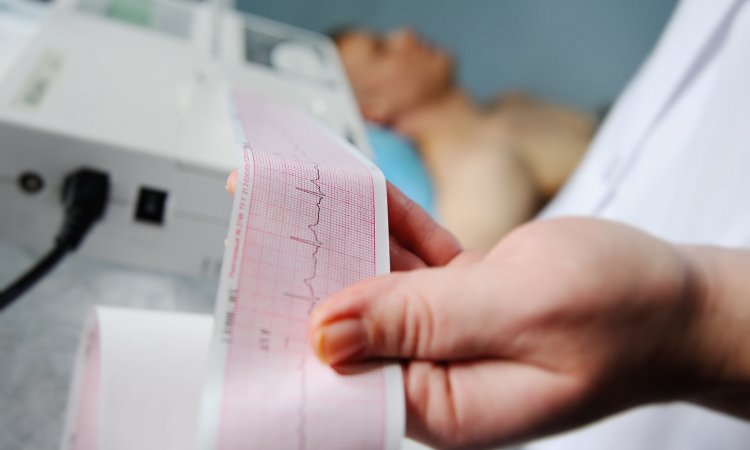Austria’s cardiovascular research
AIT’s device Mobil-O-Graph enables arterial stiffness measurements over a 24-hour period
Arterial stiffness of the central human blood vessels leads to increased work for the heart and damages microstructures in the organs. However, measuring blood vessel elasticity inside the body is not that easy.

The established method – a minimally invasive procedure – is mainly used in a scientific setting and only rarely used outside the hospital. However, an Austrian research institution has developed a mobile device that facilitates measurements of arterial stiffness over a 24-hour period.
‘Measuring the stiffness of the vessels allows a better assessment of the cardiovascular risk and improves the ability to monitor the effects of treatment,’ explains Dr Siegfried Wassertheurer, Deputy Head at the Department of Health & Environment at the Austrian Institute of Technology (AIT).
In their current treatment guidelines both the European Society of Hypertension and Cardiology (ESH and ESC respectively) refer to the use of pulse wave analysis (PWA) to determine central haemodynamics. Pulse wave speed, pulse wave reflection and data on central blood pressure deliver information about the stiffness of the arteries because pathologies lead to characteristic changes in the dynamics of the pulse waves. ‘When the vessels become stiff, meaning calcified, the speed at which the pulse waves spread through the body is significantly higher,’ Dr Wassertheurer points out.
For the measurement of arterial stiffness inside the body, conventional blood pressure measuring on the brachial artery alone does not suffice. Peripheral pulse curves differ in form, speed and amplitude very clearly from central pulse curves. The AIT has therefore developed mathematical algorithms that make it possible to determine the aortic pulse curve from the peripheral pulse curve measured on the upper arm. These were integrated into a conventional, mobile blood pressure measuring device, which continuously measures a patient’s blood pressure over a 24-hour period. ‘This combination of 24-hour measurement and algorithms facilitates a focused diagnosis of the state of the aortic vessels, ‘ he says.
Via a cuff attached to the upper arm, the Mobil-O-Graph initially measures peripheral blood pressure in two measurement cycles and then, indirectly, measures the internal blood pressure and therefore the state of the aortic vessels. Developed in collaboration with the Department of Cardiology at Wels-Grieskirchen Hospital (Upper Austria) and the German blood pressure measuring equipment manufacturer I.E.M., the AIT device is already licensed in Europe, the USA, Canada and South America and a license for use in Japan is currently in the pipeline.
More than 1,000 of these devices are currently used worldwide, mainly in hospitals and some surgeries. The cost of acquisition is currently around €5,000. ‘We are working on making the devices smaller and simpler still, so that costs will continue to fall, making mass production feasible in a few years’ time,’ Dr Wassertheurer predicts.
‘In the past, the thinking was that high blood pressure leads to stiff arteries. However, it seems to be the other way round,’ says Thomas Weber PD MD, head of the Hypertension Out-patient Clinic at Wels-Grieskirchen Hospital, explaining the medical importance of arterial stiffness. ‘With every heartbeat, the large vessels are stretched, which, over the years, causes enormous mechanical strain. The elastin in the media degenerates and is replaced by the stiffer collagen, which makes the large arteries stiffer.’ This increases strain on the heart while the circulation also worsens, and it also damages the small blood vessels in the brain and kidneys, he points out. ‘Therefore it’s important to carry out screening at an early stage, to diagnose damage to the heart, brain and kidneys and, through consistent treatment, avoid anything worse.’
PROFILE
Born in Graz, Austria (1972), Dr Siegfried Wassertheurer studied Business Information Technology at the Vienna University of Technology and wrote his doctoral thesis on cardiovascular modelling and simulation. In 2000 he joined the Biomedical Systems Unit in the Department of Health & Environment at the Austrian Institute of Technology (AIT), where he is Deputy Head. This is Austria’s largest extramural research institution (formerly known as the Austrian Research Centre).
04.03.2013











